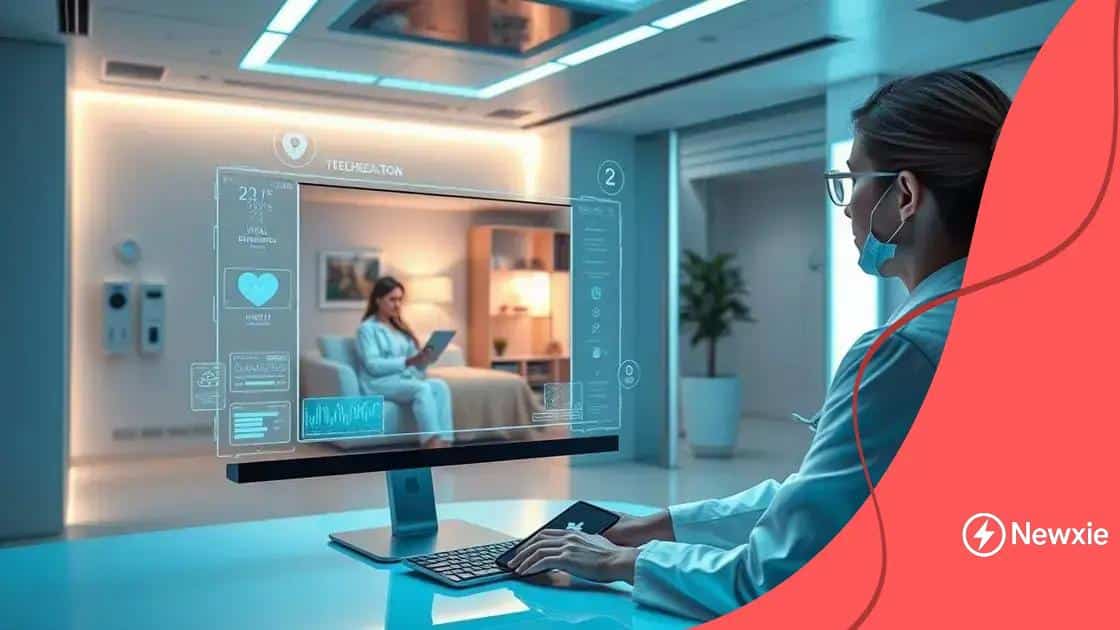New advancements in employer-sponsored health plans

Anúncios
New advancements in employer-sponsored health plans focus on personalized coverage, technology integration, and enhanced wellness programs, significantly improving employee satisfaction and health outcomes.
Welcome to the evolving landscape of new advancements in employer-sponsored health plans. Have you noticed how these changes can directly impact your well-being and financial security? Let’s dig deeper into what this means for you.
Understanding employer-sponsored health plans
Anúncios
Understanding employer-sponsored health plans is essential for both employers and employees. These plans are designed to provide health coverage for workers and their families, but they can be complex. Let’s break down the key components and benefits.
Types of Employer-Sponsored Health Plans
There are different types of employer-sponsored health plans, each offering unique benefits. These include:
- Health Maintenance Organizations (HMOs)
- Preferred Provider Organizations (PPOs)
- Exclusive Provider Organizations (EPOs)
- High Deductible Health Plans (HDHPs)
Each type of plan has its advantages and disadvantages, affecting how you access care and manage your expenses.
Key Benefits of Employer-Sponsored Plans
One of the primary advantages of employer-sponsored health plans is cost sharing. Often, employers will cover a significant portion of the premiums, making health care more affordable for employees. Additionally, these plans may offer:
Anúncios
- Access to a wider network of providers
- Preventive care services at no additional cost
- Additional wellness programs promoting health
Understanding these benefits can help employees take full advantage of what their plans offer.
Also, many employer plans come with wellness incentives that encourage healthy behaviors. These programs can reward employees for annual screenings, workout classes, and smoking cessation programs. Engaging in such activities can lead to a healthier workforce and lower overall health care costs.
However, it’s important to review the plan’s specific benefits, costs, and coverage limits. If employees understand their plan better, they can make informed decisions about their health care needs. Whether it’s choosing physicians or deciding on procedures, knowledge is power.
Key benefits of new advancements
The key benefits of new advancements in employer-sponsored health plans can significantly impact both employees and organizations. Understanding these benefits is essential for maximizing health care options and managing costs effectively.
Enhanced Coverage Options
Recent advancements have led to improved coverage options that cater to diverse employee needs. Employers can now offer plans that include:
- Telehealth services for convenient access
- Comprehensive mental health care
- Chronic disease management programs
- Expanded preventive care services
These enhancements ensure employees receive the necessary support for their health, which can lead to better outcomes and increased satisfaction.
Cost Savings and Efficiency
Another vital benefit of these advancements is the potential for cost savings. Employers can leverage new technologies to streamline processes and reduce administrative burdens. By using data analytics, organizations can:
- Identify cost-effective treatment options
- Improve patient care coordination
- Optimally design benefit structures
This results in lower premiums and out-of-pocket expenses for employees while maintaining high-quality care.
Additionally, these advancements often come with integrated health management solutions. Such tools help employees track their health goals effectively and encourage them to engage in healthy behaviors. This engagement can ultimately lead to a decrease in claims and overall health costs for employers.
It is essential to recognize that these advancements not only benefit employees but also create a healthier workplace. When employees have access to comprehensive and supportive health plans, they are more likely to stay healthy and productive.
How technology is transforming health plans

Technology is profoundly transforming health plans and reshaping how we access medical services. From mobile apps to telemedicine, these advancements are making health care more convenient and accessible.
Telemedicine Innovations
One of the most significant changes has been the rise of telemedicine. This allows patients to consult with doctors remotely, saving time and increasing accessibility. The benefits of telemedicine include:
- Reduced waiting times for appointments
- Lower travel costs for patients
- Increased access for those in rural areas
With telemedicine, individuals can receive necessary care quickly and effectively.
Data Analytics and Personalized Care
Another aspect of technological transformation is the use of data analytics in designing health plans. Employers can analyze data to offer personalized plans that suit their employees’ specific needs. This leads to:
- Better health outcomes through targeted interventions
- More efficient resource allocation
- Improved satisfaction among employees
Personalized care helps ensure that employees receive the right benefits based on their unique health profiles.
Furthermore, technological advancements also include health apps that help users track their well-being. These apps can monitor everything from exercise to medication reminders. When employees actively engage with their health, they’re more likely to maintain good health practices.
The integration of technology in health plans not only benefits employees but also enhances the overall efficiency of health care systems. With the proper tools, both employees and employers can manage their health care better, giving them a clear advantage in navigating today’s health landscape.
Navigating regulatory changes
Navigating regulatory changes in employer-sponsored health plans is essential in today’s evolving health care landscape. With laws and regulations frequently changing, employers must stay informed to ensure compliance and offer the best benefits to their employees.
Staying Updated with Legislation
One of the key steps is to keep track of relevant legislation that affects health plans. Changes can occur at both the federal and state levels. Employers should focus on:
- Understanding the Affordable Care Act (ACA) requirements
- Monitoring new family leave laws
- Keeping up with updates on health care tax credits
By staying updated, employers can adjust their plans to meet current legal standards.
Effective Communication and Training
Employers must also communicate regulatory changes to their employees. Effective communication can prevent confusion and ensure everyone understands their options. Additionally, training HR staff on compliance is crucial. It helps them assist employees with:
- Understanding benefits and coverage
- Submitting claims correctly
- Navigating open enrollment periods
Making sure that employees are informed can lead to better engagement with their health plans.
Moreover, utilizing technology can simplify the process of managing regulatory changes. Many organizations turn to software solutions to track compliance and offer real-time updates on legislative changes. These tools make it easier to implement and adapt plans promptly.
Engaging with legal and compliance experts can provide even more support. They can help navigate complex regulations and ensure that the organization remains compliant while still offering competitive benefits.
Future trends in employer health benefits
Future trends in employer health benefits are shaped by evolving employee needs and advancements in technology. As businesses adapt to changes in the workforce, offering competitive health benefits becomes increasingly important.
Personalization of Health Plans
One significant trend is the move towards personalized health plans. Employers are recognizing the diversity of their workforce and the need to customize benefits. This includes:
- Flexible spending accounts tailored to individual needs
- Specialized health programs for chronic conditions
- Wellness incentives based on personal health goals
By personalizing health benefits, companies can enhance employee satisfaction and engagement.
Integration of Technology
Another trend is the integration of technology into health benefits. Employers are increasingly using digital tools to streamline services. These technologies include:
- Health apps for tracking wellness
- Telehealth services for remote consultations
- Online platforms for managing benefits and claims
Such tools make accessing health care simpler and more efficient.
Moreover, data analytics plays a crucial role in shaping future trends. Employers can analyze health data to develop better programs that meet employee needs. This not only helps tailor benefits but also allows for cost-effective decision-making. Companies can identify patterns and potentially prevent health issues before they become severe.
As wellness becomes a priority, mental health support is also gaining attention. More employers are including mental health services in their health plans, acknowledging its essential role in overall well-being. This could lead to more comprehensive programs that encompass mental health resources, counseling, and stress management workshops.
FAQ – Frequently Asked Questions about Employer-Sponsored Health Benefits
What are employer-sponsored health benefits?
Employer-sponsored health benefits are insurance plans provided by employers to cover medical expenses for their employees and sometimes their families.
How are future trends affecting health benefits?
Future trends are focusing on personalized plans, technology integration, and wellness initiatives to better meet employee needs and improve satisfaction.
What role does technology play in health benefits?
Technology streamlines health care access and management, utilizing tools like telemedicine, health apps, and data analytics to enhance employee engagement and outcomes.
Why is personalization important in health benefits?
Personalization allows employers to tailor health plans to the unique needs of their employees, leading to higher satisfaction and better health outcomes.
SEE MORE CONTENT




